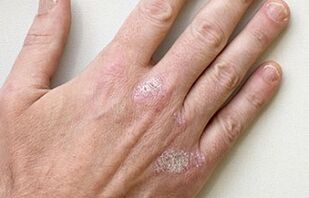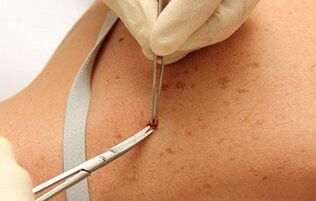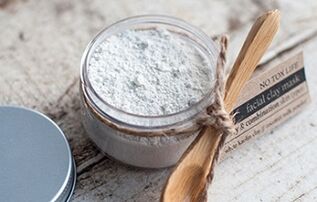Psoriasis is a chronic skin disease. It manifests itself in the form of rashes. The initial stage is characterized by symptoms that are similar to the clinical picture of other pathologies of the epidermis. To prevent the progression of the disease and facilitate its course, it is necessary to differentiate the pathology. To do this, you need to know the symptoms and manifestations of psoriasis at different stages.
Causes in adults and children
Doctors have not yet figured out exactly why psoriasis occurs in children and adults. There is only speculation about the cause of the development of this disease. So there is an assumption that psoriasis can be inherited: a psoriasis rash is often observed in people whose parents had such a skin disease. Some doctors associate the development of pathology with immunological instability, metabolic disorders and the presence of chronic infection. Doctors find that most patients have severe hyperlipidemia.
To check the susceptibility to such a disease, you need to carry out a classic genome analysis. Those with ten chromosomal locations are most likely to develop psoriasis. The main genome responsible for innate predisposition is PSORS1.
Psoriasis can develop at any age: in children, young men and women, and the elderly. According to adults, the disease in adults is caused by the following factors:
- low immunity;
- chronic fatigue;
- alcohol abuse;
- severe stress;
- bad hygiene;
- constant overeating;
- insect bite;
- infectious pathologies (influenza, ARVI);
- vaccination;
- temperature difference;
- vitamin deficiency;
- smoking;
- long-term medication;
- burn;
- allergy;
- hormonal imbalance;
- climate change;
- wrong diet.
Children are most often confronted with psoriasis eruptions:
- after a sore throat;
- if there is a chronic infection in the body;
- with low immunity.
Psoriasis should not be started:People with this diagnosis increase the risk of early atherosclerotic vascular lesions and the development of heart disease. There is also a risk of arthritis.
Psoriasis is most common in people with low inheritance.
How psoriasis manifests itself

Psoriasis is characterized by the appearance of large plaques on the skin. The spots are initially insignificant and appear on those parts of the body where the skin is coarser (on the elbows, knees). Such formations peel off. When scratching, sores appear that turn pale in the morning.
The disease is characterized by the following manifestations:
- stearin coloring.These are small scaly papules that have fused into plaques.
- Terminal film.There is thin, light pink skin under psoriasis plaques. Your doctor can see after removing any dandruff.
- Precise bleeding(blood thaw syndrome). When the final film is damaged by scraping the stratum corneum of the epidermis, drops of blood appear.
Such manifestations in the aggregate are called the psoriatic triad. They are detected during a sample of the inflamed skin area.
Psoriasis also has the following symptoms:
- the formation of new papules with skin damage and an enlargement of the lesion area;
- elements of the rash have a dense structure;
- there is a red border around the board;
- weakness;
- the presence of a whitish pseudo-atrophic margin three millimeters around the rash;
- purulent odor from the skin (when pustules form);
- the phenomenon of oil formation, in which a yellowish-brown spot appears under the nail plate;
- proliferative acanthosis, in which the skin becomes thicker, the interpapillary processes become longer;
- thimble symptom (nail psoriasis);
- Scabies.
Since psoriasis is a chronic pathology, its symptoms go away after a while, wounds heal. But then papules form again.
The first symptoms of the outbreak of the disease
The first stage of psoriasis always develops a rash.
At first it is almost invisible, with no characteristic scales. Multiple rashes appear on the limbs.

After a few weeks, the number of affected areas increases. The rash turns into large plaques covered with silver scales. The itching in the early stages of psoriasis is moderate. A person complains of chronic fatigue, weakness.
Such symptoms are also characteristic of allergic skin reactions, dermatitis and shingles. Therefore, it is important to conduct differential diagnosis.
During the examination, the doctor discovers the psoriasis triad. Based on the size of the rash, the doctor determines the etiology of psoriasis: drop-shaped, punctiform or coin-shaped.
Signs of a progressive stage of the disease
As the disease progresses, the number of papules increases, the rash spreads to healthy areas of the body. The slightest scratch, bump or burn will cause a lumpy rash. The second stage takes a long time. When palpating, you will find dense boundaries between the inflamed areas of the epidermis. The plaques have an edge that is distinguished by a light color and covered with scales.
In the final stage of the disease, the symptoms gradually disappear. The plaques become lighter, their edges fade. After a while, the papules disappear, dry skin, hyperpigmented areas remain in their place.
The temperature in psoriasis can rise only in the presence of an inflammatory process, suppuration of acne. Then the affected areas can be injured.
What is the phenomenon of stearin coloring?
Stearin spots are the main symptom that makes up the psoriasis triad. It is a small area with papular elements of the rash that are severely scaly. The more the doctor scratches the affected skin, the more dandruff will appear. During the manipulation, the person is in no pain. The phenomenon got its name because the peelable flakes of skin look like stearin stains.
Where does it appear first: Localization of skin rashes
First, psoriasis eruptions form on the elbows, feet and knees. Then the papules spread to areas of the body with thinner and more sensitive skin: the lower leg, lower back, wrist, stomach, groin, and scalp. The rash can be localized in other places. However, these areas of the body are most commonly affected by psoriasis.
Without proper treatment, the disease spreads to nails, mucous membranes and joints.
The localization of psoriasis rash in adults can be:
- head. Rashes are observed on the scalp, ears, back of the head, in the area of the eyebrows, eyelids, eyes and nasolabial folds.
- Lower limbs.
- elbows. Scaly plaques will form and become rough over time.
- Upper limbs. A small rash similar to urticaria occurs.
Rashes usually occur in children:
- legs;
- buttocks;
- skin folds;
- elbow;
- the scalp.
How does the flaky scalp on the head begin?
Scaly lichen can spread throughout the body. It's usually acute. A rash forms from a pearl to a pea. The papule is covered with silver and white scales. The rashes increase over time and merge into a focus with uneven edges. This board has a clear border. If the scalp is affected by psoriasis, a psoriasis crown forms: behind the ears and along the forehead line, red pustules with purulent contents appear.
How quickly the pathology develops
How quickly psoriasis develops depends on its shape. So, the teardrop-shaped type of pathology is characterized by the ability to appear and disappear abruptly. Severe plaque psoriasis is characterized by the gradual spread of pustules throughout the body. The rash will then be covered in scales in a short time. The rashes merge and form large plaques.
Diagnostic methods

If psoriasis is suspected, consult a dermatologist. The doctor makes a suspected diagnosis based on the patient's complaints and examinations. The doctor refers an instrumental laboratory research. A differential diagnosis is also performed.
If the disease progresses, it is recommended to donate blood for analysis to identify an acute, autoimmune, or rheumatic process. In severe situations, a biopsy is also done, which shows the accumulation of rete bodies, the thickening of the layer, the infiltration of the skin by polyblasts, T lymphocytes, dendritic cells, and increased angiogenesis under psoriatic plaques.
Do the following for the differential diagnosis:
- allergy test; biochemical serum test
- ;
- Analysis of feces for dysbiosis;
- histological examination of the biopsy.
No special tests are required to diagnose psoriasis in children. The pathology is determined by examining the elements of the rash.
How do you treat psoriasis?
Because psoriasis is considered a chronic condition, it cannot be completely cured. The aim of therapy is to achieve stable remission and eliminate complications. To do this, use drugs, physiotherapy and folk methods. In severe cases, the patient is hospitalized. In the initial phase, therapy can be carried out at home.
Therapy in the clinic
To treat psoriasis lesions, doctors prescribe antihistamines to relieve swelling, itching, and redness.

Enzymatic agents are also used. They stimulate the body to produce the necessary enzymes. Damage to the skin of the body leads to discomfort and tension.
The realization that the disease cannot be cured causes psychological problems. Therefore, doctors prescribe sedatives to restore the emotional state.
Hepatoprotectors are used to improve liver function. Inflammation and itching can be relieved by using nonsteroidal anti-inflammatory drugs. To strengthen the body, immunomodulators are prescribed.
Physiotherapy techniques are also used. They help remove pigment and speed healing. Doctors recommend:
- selective herbal medicine;
- laser action on the skin;
- ultrasound treatment;
- magnetotherapy.
In a hospital, the patient is under the constant supervision of doctors. Therefore, it is easy to track the effectiveness of the prescribed treatment regimen in order to make timely adjustments to the therapy being used.
Treatment at home
After discharge from the hospital, treatment will continue. In order to maintain normal health and achieve stable remission, doctors prescribe a number of drugs in one course. Vitamin complexes, ointments and folk remedies are used.
The patient is advised to treat the skin areas affected by psoriasis daily with hormonal and non-hormonal ointments.
To improve the condition of the epidermis, dermatologists prescribe vitamins. Vitamins A, E, D, and C are especially useful in fighting psoriasis. They strengthen the body's defenses, help restore and cleanse the skin.

Traditional healers recommend the use of activated charcoal. One of the main reasons for the development of psoriasis is metabolic disorders, poisoning. Activated charcoal acts as an absorbent and therefore cleanses the body of harmful substances well. It should be taken twice a day for a month at a dosage of 1 tablet per kilogram of body weight.
White clay will help restore the skin. It soothes inflammation, dries, eliminates itching. Baths with added sea salt are also useful.
When treating psoriasis at home, it is recommended to follow a number of rules:
- Take medication prescribed by your doctor in the specified dose.
- Treat the skin with ointments and creams.
- Carefully remove crusts after they have softened.
- Take air and sunbathing.
- Avoid stressful situations.
- Pay attention to the daily routine and diet.
- Get enough rest.
- Take breaks while you are taking medication.
By following these recommendations, a person can avoid relapse of the disease.
Therefore, psoriasis is a serious chronic disease. The reasons for its development are not known exactly, only provoking factors are known. The disease has characteristic symptoms, but at the first stage it resembles other skin pathologies. In order to identify and treat the disease in a timely manner, you need to contact a dermatologist if a suspicious rash appears.

























